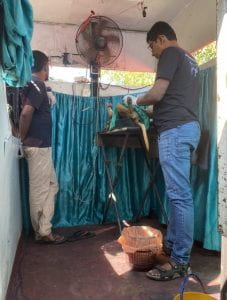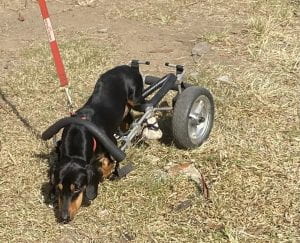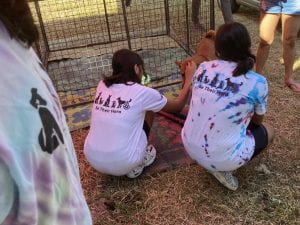On the morning of the 18th of February 2023, around 7:30 am, the service members gathered at Asiri Uyana to start preparing for the camp. This time was used to set everything up and make sure that the necessary materials were all there. The service group collabed with the Adopt a Dog Sri Lanka Organisation, with Dr. Chamith Nanayakkara in charge, advisor to the board of the Association of Veterinarians of Humane Management of Animal Population. Dr. Nanayakkara has worked with Care for Paws for several years now and has helped sterilise hundreds of animals (including dogs and cats).
Sterilisation camps take lots of work and require lots of spare hands, and that is where the members from the group take action. The members focus on taking care of the animals pre and post surgery, filling in documentations for pets as well as participate in providing some of the treatments for the animals, such as vaccinations, hydration drips, tick removal, and skin treatments for rashes.

Tranquilisers used; Credit: author

Dr. Chamith Nanayakkara performing a surgery; Credit: author
The animals required a lot of attention as in the beginning they are scared, so then they are given tranquilisers and anaesthetics (the doctor used xyla and ketamine). After a couple of minutes, they are taken to the surgery table where they are prepped and then sterilised. After the surgery, the animals need to be kept hydrated through the hydration drip as well as made sure to stay safe while waking up, trying to avoid any stress or agitation.

Mid surgery of a female dog; Credit: author
Before the camp, the members of Care for Paws agreed on bringing certain materials to better help the process, such as yoghurt for the animals after the surgery, latex gloves, worm medicine and cloths to cover the wounds after the surgery.
The camp was held in a neighbourhood, so most animals were brought in by locals inhabiting that area, however there were a couple of people who reached the camp by vehicle. This demonstrates how the locals acknowledge the issue of overpopulation and take initiatives to prevent it.

People bringing their dogs; Credit: author

Dog in a wheelchair; Credit: author
People would also bring their pets to fill out their documents/ pet record books to confirm their ownership and also the treatment which the animal received.
The students were responsible for assuring that every owner left with a document that stated the information about the animal, the treatment and the date (preparing for the next visit, if necessary).
A total of 56 animals were brought to the camp, out of which 30 dogs and 26 cats have been vaccinated against rabies, 11 total surgeries and 7 skin treatments. Unfortunately, there haven’t been many sterilisations, however that also means that that area has been cleared and the majority of that population has already been sterilised.
It shows how effective these sterilisations are on the population, and how it helps control the population of strays in Sri Lanka. By marking their ears, the animals are labelled, so that it is clear which animals have already been sterilised.
Also the amount of people that showed up bringing their own animals or even just animals from their area has shown great concern for this matter and how people are willing to get involved and solve this issue.
Although not new for every member of the service, this experience has been an extremely useful lesson about the significance of uncontrolled dog and cat populations on the street. It showed the students the real picture of the situation and allowed them to interact with it and collaboratively help solve and reduce the impact of the possible risks on both the animals and the locals. As well as encouraging them to get their hands dirty and have direct contact with the animals.

Cats recoverying post surgery; Credit: author

Mai filling in the pet information; Credit: author

Members taking care of the dogs; Credit: author